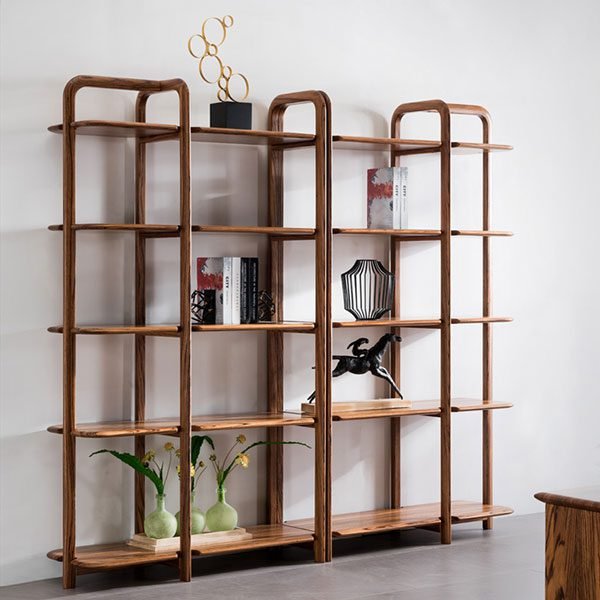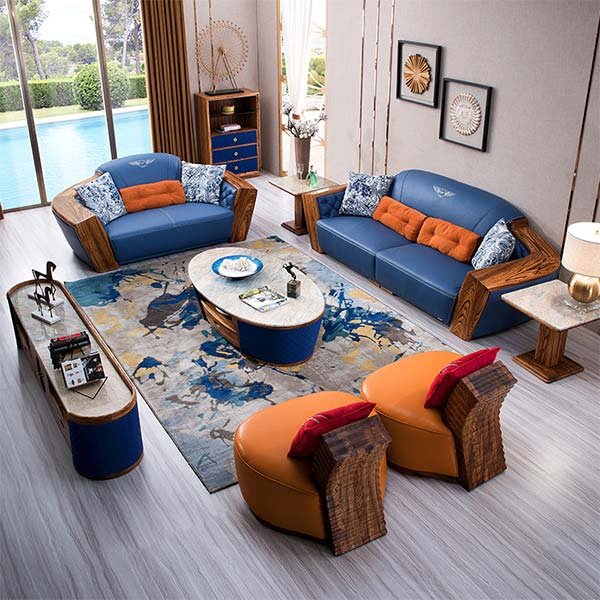“Unlock the Beauty of Nature with Expertly Chosen Wood for Outdoor Furniture.”
Types of wood commonly used for outdoor furniture
Types of wood commonly used for outdoor furniture
When it comes to choosing the best wood for outdoor furniture, there are several factors to consider. The type of wood you choose will determine the durability, appearance, and overall quality of your furniture. In this article, we will explore the most commonly used types of wood for outdoor furniture and provide expert insights to help you make an informed decision.
One of the most popular choices for outdoor furniture is teak. Teak wood is known for its natural resistance to water, insects, and decay. It has a beautiful golden color that weathers to a silver-gray over time, giving it a timeless and elegant look. Teak furniture is also highly durable and requires minimal maintenance, making it a favorite among homeowners and designers alike.
Another commonly used wood for outdoor furniture is cedar. Cedar wood is naturally resistant to rot, decay, and insects, making it an excellent choice for outdoor use. It has a distinct aroma and a rich, reddish-brown color that adds warmth and character to any outdoor space. Cedar furniture is lightweight and easy to move around, making it a practical option for those who like to rearrange their outdoor furniture frequently.
If you’re looking for a more affordable option, pine wood is a popular choice for outdoor furniture. Pine is readily available and relatively inexpensive compared to other types of wood. However, it is important to note that pine is not as durable as teak or cedar and may require regular maintenance to prevent rot and decay. With proper care and treatment, pine furniture can still last for many years and provide a comfortable and inviting outdoor seating area.
For those who prefer a more modern and contemporary look, acacia wood is a great choice. Acacia wood is known for its durability and resistance to weathering. It has a beautiful grain pattern and a warm, reddish-brown color that adds a touch of elegance to any outdoor space. Acacia furniture is also relatively low maintenance and can withstand the elements without losing its beauty and integrity.
In addition to these popular choices, there are several other types of wood that can be used for outdoor furniture, such as oak, mahogany, and eucalyptus. Each type of wood has its own unique characteristics and benefits, so it’s important to consider your specific needs and preferences when making a decision.
When choosing the best wood for outdoor furniture, it’s important to consider factors such as durability, resistance to weathering, and overall appearance. Teak, cedar, pine, and acacia are all excellent choices that offer different advantages depending on your specific requirements. It’s also important to properly maintain and care for your outdoor furniture to ensure its longevity and beauty.
In conclusion, choosing the best wood for outdoor furniture requires careful consideration of various factors. Teak, cedar, pine, and acacia are all popular choices that offer different benefits in terms of durability, resistance to weathering, and overall appearance. By understanding the characteristics of each type of wood and properly maintaining your furniture, you can create a beautiful and inviting outdoor space that will last for years to come.
Factors to consider when choosing wood for outdoor furniture
Expert Insights into Choosing the Best Wood for Outdoor Furniture
When it comes to choosing wood for outdoor furniture, there are several factors to consider. The type of wood you select will determine the durability, appearance, and overall quality of your furniture. In this article, we will explore some expert insights into choosing the best wood for outdoor furniture.
One of the most important factors to consider is the wood’s resistance to weather and insects. Outdoor furniture is constantly exposed to the elements, so it is crucial to choose a wood that can withstand rain, sun, and temperature fluctuations. Hardwoods such as teak, cedar, and redwood are known for their natural resistance to decay and insect damage. These woods contain natural oils and resins that act as a protective barrier, making them ideal for outdoor use.
Another factor to consider is the wood’s strength and stability. Outdoor furniture needs to be able to withstand heavy use and weight, so it is important to choose a wood that is strong and stable. Hardwoods like oak and mahogany are known for their strength and durability. They are less likely to warp or crack over time, ensuring that your furniture will last for years to come.
In addition to strength and resistance, the appearance of the wood is also an important consideration. Outdoor furniture is often a focal point in a backyard or patio, so it is important to choose a wood that is visually appealing. Some woods, like teak and cedar, have a natural beauty and rich color that can enhance the overall aesthetic of your outdoor space. Other woods, like pine and fir, can be stained or painted to achieve the desired look.
Cost is another factor to consider when choosing wood for outdoor furniture. Some woods, like teak and cedar, are more expensive due to their durability and natural resistance to weather and insects. However, there are also more affordable options available, such as pine and fir. These woods may require more maintenance and may not last as long as hardwoods, but they can still be a good choice for those on a budget.
Maintenance requirements should also be taken into account when choosing wood for outdoor furniture. Some woods, like teak and cedar, require minimal maintenance and can be left untreated to weather naturally. Others, like pine and fir, may require regular sealing or staining to protect them from the elements. It is important to consider how much time and effort you are willing to invest in maintaining your outdoor furniture.
In conclusion, choosing the best wood for outdoor furniture involves considering factors such as resistance to weather and insects, strength and stability, appearance, cost, and maintenance requirements. Hardwoods like teak, cedar, and redwood are popular choices due to their natural resistance and durability. However, there are also more affordable options available, such as pine and fir. Ultimately, the best wood for your outdoor furniture will depend on your specific needs and preferences.
Tips for maintaining and preserving outdoor wooden furniture
Outdoor wooden furniture can add a touch of elegance and natural beauty to any outdoor space. However, in order to keep it looking its best and ensure its longevity, proper maintenance and preservation are essential. In this article, we will provide expert insights and tips on how to choose the best wood for outdoor furniture, as well as how to maintain and preserve it.
When it comes to choosing the best wood for outdoor furniture, durability is key. The wood should be able to withstand the elements, such as rain, sun, and temperature fluctuations, without warping, cracking, or rotting. Some of the best wood options for outdoor furniture include teak, cedar, and eucalyptus.
Teak is often considered the gold standard for outdoor furniture due to its natural oils that make it highly resistant to water, insects, and decay. It has a beautiful golden color that weathers to a silver-gray over time. Cedar is another popular choice, known for its natural resistance to rot and insects. It has a warm reddish-brown color that can be preserved with regular staining or left to weather to a silvery gray. Eucalyptus is a more affordable option that offers similar durability and resistance to the elements.
Once you have chosen the right wood for your outdoor furniture, it is important to properly maintain and preserve it to ensure its longevity. One of the most important steps is to regularly clean the furniture to remove dirt, dust, and grime. This can be done with a mild soap and water solution and a soft brush or cloth. Avoid using harsh chemicals or abrasive cleaners, as they can damage the wood.
In addition to regular cleaning, it is recommended to apply a protective finish to the wood. This can be in the form of a sealant, stain, or paint. A sealant will help to protect the wood from moisture and UV rays, while a stain or paint can enhance its appearance and provide additional protection. Be sure to choose a finish that is specifically designed for outdoor use and follow the manufacturer’s instructions for application.
Another important tip for maintaining outdoor wooden furniture is to protect it from the elements when not in use. This can be done by covering the furniture with a waterproof cover or storing it in a shed or garage during harsh weather conditions. This will help to prevent damage from rain, snow, and excessive sun exposure.
Regular inspections are also crucial for identifying any signs of damage or wear. Check for any cracks, splits, or loose joints, and repair them as soon as possible to prevent further damage. It is also a good idea to periodically sand and refinish the furniture to keep it looking its best.
In conclusion, choosing the best wood for outdoor furniture and properly maintaining and preserving it are essential for its longevity and appearance. Teak, cedar, and eucalyptus are all excellent options due to their durability and resistance to the elements. Regular cleaning, applying a protective finish, and protecting the furniture from the elements when not in use are all important steps in maintaining outdoor wooden furniture. By following these expert insights and tips, you can ensure that your outdoor furniture remains beautiful and functional for years to come.
Заключение
Заключение: Эксперты рекомендуют выбирать для наружной мебели древесину, которая обладает высокой стойкостью к воздействию погодных условий и влаги. Некоторые из лучших вариантов включают тик, кедр, ель и дуб. Они имеют естественную устойчивость к гниению и разложению, а также способны выдерживать экстремальные температуры и влажность. Кроме того, важно учитывать такие факторы, как доступность, стоимость и эстетические предпочтения при выборе древесины для наружной мебели.



